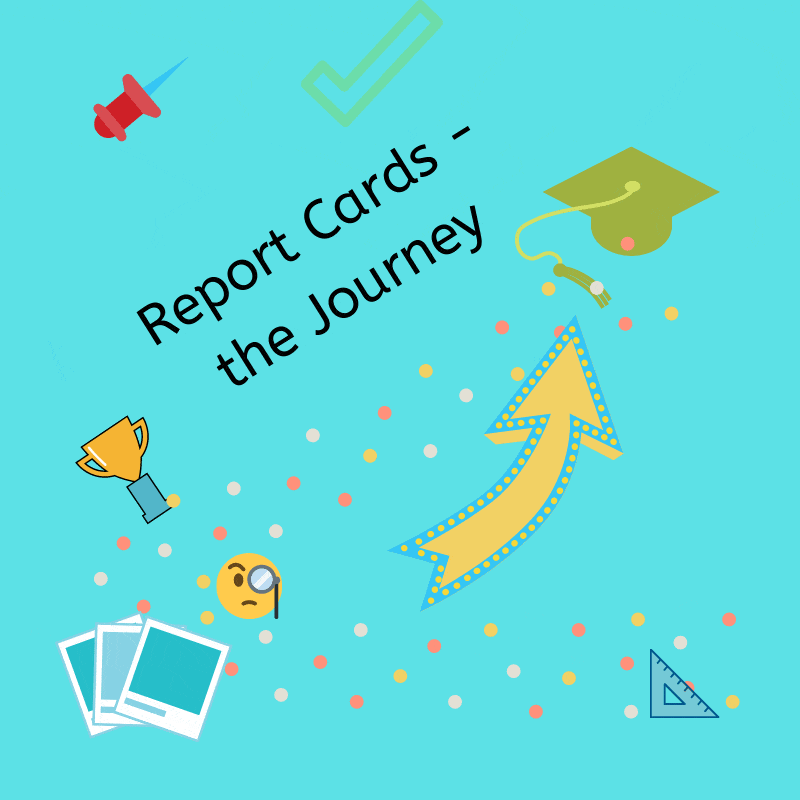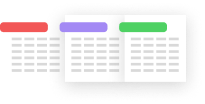
Any education system across the world uses some form of reporting on the student’s performance. Report cards have evolved from being a list of marks scored to a detailed analysis of performance. The report card is pretty much a student’s silent companion through out. It gets scrutinized, debated, and eventually frayed over the years. As each student moves on from school. college, and employment – the report card is a constant artefact to maintain.
A report card is a container of powerful student data. It collates a child’s performance and provides strategic feedback for improvement. Report cards need to be well-defined and clear. We must be able to precisely measure student development and improvement. Remarks, goals, or plans mentioned in the report should be achievable. If assumptions are set too high, it could raise obstruction and disappointment in the student. It is also very important that the teachers, parents, and student act as a team on developing and setting up these goals.
Let’s discuss some of the challenges in the design, content and the very purpose of the report card. The journey of the report card starts from the teachers, students, parents, institutions and finally the employers.
Teachers and the Report Card
With the emergence of new teaching methodologies, the function of the teacher has escalated manifold. Especially, while creating grade books and report cards. A report card aids to improve the teacher-parent understanding. A Report card is a vital tool to help guide the students to reach educational and individual excellence.
Outstanding performance! Room for Improvement! Keep it up! Balance your effort!
These are some of the common remarks stamped across millions of report cards across the globe. The goal of these remarks or observations is to give parents and students a clear and easy summary of student performance. Automation has enabled teachers to do away with the manual entry process followed by their peers a few decades back. There are tools that help teachers craft good comments. There are tools to provide a good subjective analysis of the student performance.
In Classe365, teachers can add comments in the grade books for each student. They can add comments for the overall score as well as scores for each assessment the student has taken.
Generating a report card or grade book involves various calculations and changes. Using SIS tools like Classe365, teachers can now easily enter grades, enter comments, generate report cards and publish them.
Take a look at the Video on Assessments and Grading here.
Teachers have to be collaborative and drive the process for better student participation in school studies and activities without the long arm of the report card in between.
Strategic Data and Business Intelligence to Manage Report cards
Discussions, debates, and legislations on reporting standards continue across educational institutes. As another decade of this century comes to a close, we need to map the reporting needs of an institution with the social impact it has on today’s millennial student.
In a technology-driven world, we still require meticulous printed static report cards. We still rely on manual entries in the report card to get an analytical, emotional, and behavioural pattern of a student. Irrespective of school or professional life, we end up utilizing this information once in a while.
With the emergence of growing Education Technology or EdTech industry, do we need to have more robust tools to generate real-time reports? Do we really need to over burden the teachers to give their assessments, grades, and opinion? should teachers be able to create Business Intelligence reports?
Business Intelligence reporting and Analytics tools equip teachers with qualitative and quantitative material needed to manage student data. With the precise reporting and analytic solutions, teachers and educators could derive the right amount of data and enhance overall performance of the student or fine tune the curriculum.
Tracking Overall Progress
Teachers, administrators, and the school system should be empowered to better serve the need of the students. Behavioural, trend analysis and AI can be used to track the progress of a student across the years spent in a school. For instance, Greg was good at English in Grade 6 and showed a flair for writing in primary school. But as he moved on to high school and beyond, his focus shifted to economics and commerce. Is there a way to observe how his latent skill in writing has permeated into his reports or case studies?
There is a flip side as well. It is good to bring out the student data in the open with reports. Above all, care has to be taken not to jeopardize the emotional state of the students. Some things are best forgotten and left to burn a hole in the school records – like an abysmal performance in geometry or a complete lack of improvement in the Spanish language.
Parents, Report cards, and Discussions
Parents are the primary consumers of the report cards. For some parents, a report card is the only connect they have with their child, if they miss the parent-teacher interaction meetings or other social events in the school.
Today’s parents would like to see more information in a report card. With the new age apps and automation, we must be able to produce report cards with analytics for the parents.
Parents, teachers, and students must be able to generate reports of their choice based on what they want to see. How does a score compare to a child’s previous year’s performance or performance across a region or a group of students? How should a parent counsel their child for a gradual trend they observe in the reports? Teachers and parents must be able to guide a student out of a potential slow-down in a particular subject.
Report cards should help nurture a constructive connection between school and home. It should assist in making improvement in areas that have been more challenging to overcome.
Classe365 has a dedicated parent’s portal where a parent could view attendance reports and the report cards, marks cards, or grades of their children. Using the LMS module, they can collaborate with the teachers. Watch the video here.
Student – the Owner of the Report Card
Students must consider the report card as a means of improvement and also reward themselves for the hard work done. The millennial student must use a collaborative approach to improve their grades rather than work in silos and breed competition amongst themselves.
In the student portal of Classe365, students can view and print their report cards online. They can go on to the Social discussions platform in the application. They can have discussions with their teachers on their pain points and help improve themselves.
Employers – Partial Reviewers?
Many organizations have built their own interviewing procedures and tests to measure whether a candidate fits their requirements or not. But, for large corporations, government sectors, and other companies with high-volume hiring, a report card is still a key differentiator. Eventually, 80% of the student report cards find their way into one HR database or the other.
This brings up the question – how does an employer perceive a low grade in the report card? Does a person with low grades in school become a low achiever for life? Is it a measure of the person’s ability to do their assigned tasks? Organizations must prepare a level playing ground for all the candidates. The report card can be one of the tools for their shortlisting and filtering of candidates.
The hiring process must strike a balance between the grades in the report card and the skills sets nurtured over the years.
Institutions – the Standardization Debate?
If each child is unique, why have the same report card format. Are we not pitting each child against the same benchmark? But without standardization, it would be difficult to manage the huge influx of students during enrolments in schools or employee walk-ins in companies.
Should report cards be even a mandate for higher education and employment? Grades, CGPA, scores, evaluations or report cards still play a significant role in the adult life. Besides, schools use certifications as a performance measurement strategy, as well. Many schools issue certificates for participation in quizzes, activities, debates and so on. However, a report card per se does not generally qualify as a Certificate of Excellence.
However, should we encourage the education system to even build an awareness of how the child could shape his or her career? For example, in densely populated countries, where the competition is high, should a report card really be the yardstick that drives the student to work harder. Likewise, in sparsely populated regions where farming or fishing may be the only eventual form of labour, do we require an assessment on programming skills? Can it be optional? The debate continues. Till then, each institution can customize their formats to suit their vision and mission.
Using Classe365, an institution can design a custom report card template. They can standardize it for use across their institution. For example, you can enable or disable many options like attendance, consolidated scores, cumulative scores and so on.
Looking Forward
A report card, for now, still is an award and reward mechanism. For the hard work you did, here are the grades you get. As a result, here is a job for you.
A report card format should address the broader question of whether getting low grades makes you a low achiever or vice versa. Above all, schools must encourage millennial students to value report cards. Since they still continue to be a method to measure academic performance.












